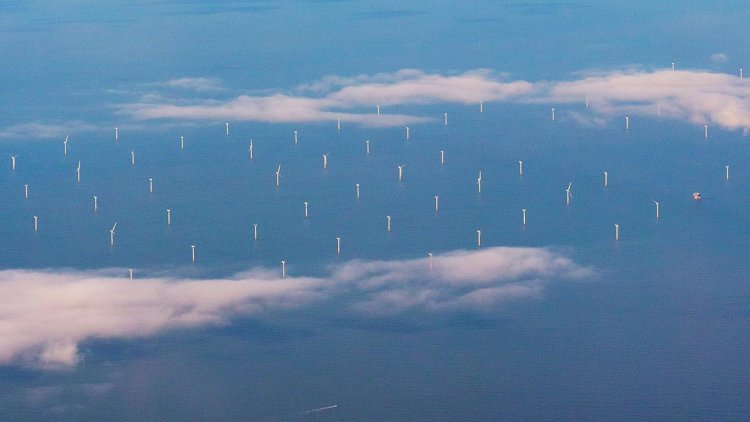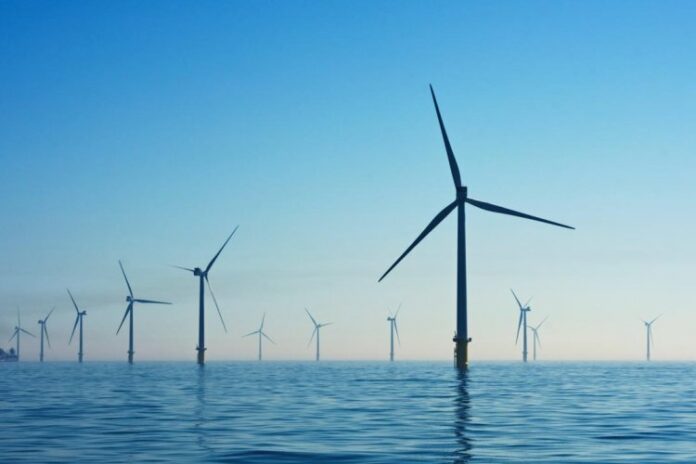Partners have launched “Haumoana – New Zealand Offshore Wind Capacity Building”, a report which highlights New Zealand’s untapped potential for offshore wind development and the opportunities to establish local supply chain as well as create enduring employment in the sector.
The parentship brings together BlueFloat Energy, a leading offshore wind developer with a global pipeline of projects, with Energy Estate, a developer of renewable energy and green hydrogen projects in Australia and New Zealand, and Elemental Group, one of the pioneers in the offshore wind sector in New Zealand.
Carlos Martin, CEO of BlueFloat Energy said:
“Offshore wind is emerging as one of the key solutions to climate change crisis as it can decarbonise global economies quickly and at scale. Additionally, it can prove pivotal in revitalising coastal communities and placing energy generation close to consumption centres.”
New Zealand has world class offshore wind resources and is well placed to benefit from the falling cost of offshore wind. This new competitive source of electricity complements perfectly the existing hydro, geothermal and onshore wind assets. Offshore wind can accelerate New Zealand’s progress towards achieving its net zero target and contribute towards the decarbonisation of other sectors, such as transport and agriculture.
Simon Currie, co-founder of Energy Estate commented:
“I witnessed first-hand the rapid development of the offshore wind industry in Europe. Our goal is to bring the lessons learned from around the world to a New Zealand setting and develop an industry which creates enduring benefits for the iwi and all stakeholders. A good example of our approach is exploring the opportunities to foster a green hydrogen and e-fuels industry that harnesses the fantastic winds across New Zealand to decarbonise domestic demand and export green fuels to the world.”
This report is the first in a series of capacity building and enabling activities including sponsoring the NZ offshore future energy forum being held this week in New Plymouth.
The report centres on the ways in which New Zealand can build its domestic capabilities across the offshore wind value chain – from supply chain to ongoing employment to decommissioning. It draws on precedents from global case studies and seeks to highlight the ecosystem that can be built around the offshore wind industry.

The key messages from the report include:
1) Fostering regional and national economic development
- Offshore wind will provide long-term employment opportunities to thousands of local workers and can provide employees in the offshore oil and gas and other marine industries the opportunity to redeploy their technical expertise and skills
- The offshore wind industry will establish a broad ecosystem of regional economic development by supporting local supply chain, including manufacturing and services
- The offshore wind industry in New Zealand could facilitate trans-Tasman collaboration in manufacturing and set up world-class skills and training programmes
2) Delivering broader benefits for Aotearoa and our communities
- Given offshore wind is a new industry in New Zealand, there is an opportunity to design the regulatory framework and development standards in a way that delivers wider benefits to iwi and local communities. This could include mandates for local employment and apprenticeships, contiguous business opportunities (like seaweed farming) and re-skilling programmes for workers
- Offshore wind can be built close to demand centres in parts of New Zealand where other technologies are impossible to deploy at large scale, decreasing transmission costs for energy users and reducing the dependency on South Island generation.
- Offshore wind can accelerate New Zealand’s progress towards achieving its net zero target
- Existing infrastructure, such as offshore oil and gas infrastructure and ports, can be repurposed
3) Supporting innovation
- New Zealand has some of the best offshore wind resources globally. There is a real opportunity to create cost-competitive green hydrogen and e-fuels which can meet domestic demand and establish a new export industry
- Offshore wind can help corporate energy users meet their increasing demand for renewable energy, for instance through buying groups
- Local businesses can partner with experienced international offshore wind players and learn from their experiences to build an offshore wind supply chain and skill base that not only services the domestic market but all over the world.
Simon Corbell, CEO of the Clean Energy Investor Group and Chief Advisor to Energy Estate shares that:
“Offshore wind development will be a key new clean energy resource development sector for New Zealand and Australia. Skilled trades are already transferrable between the jurisdictions and opportunities exist for creating first-of-a-kind training for offshore wind operations. Existing capabilities and experience in the marine and offshore oil and gas sectors should also be explored, and new partnerships created that enable existing workforces to pivot into a new offshore wind sector as it develops. The stretch goal is to create a Trans-Tasman centre of excellence which can serve the domestic industries and support the wider Asia-Pacific markets as the offshore wind industries expands across the wider region. “
Nick Jackson, Director of Elemental Group, commented:
“BlueFloat, Elemental and Energy Estate have a shared vision for Aotearoa New Zealand. We all understand and are deeply committed to achieving net zero as soon as possible. Beyond that, we are also dedicated to ensuring that oil and gas workers, the supply chain and coastal communities can recognise the benefits from an orderly transition. Our goal is to develop an offshore wind industry which puts iwi front and centre and ensures that all stakeholders get to participate rather than sit on the side-lines.”



